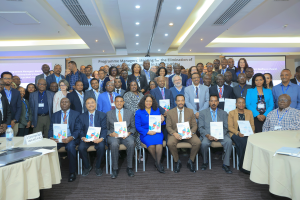New framework launched to eliminate visceral leishmaniasis in eastern Africa
A new, comprehensive framework has been launched to guide health authorities, policy-makers and other stakeholders towards elimination of visceral leishmaniasis (VL) as a public health problem in eastern Africa.
Also known as kala-azar, VL is a deadly parasitic disease that causes fever, weight loss, spleen and liver enlargement, and – if untreated – death. Transmitted by the bite of infected female sandflies, VL is endemic in 80 countries around the world. In 2022, eastern Africa accounted for 73% of global VL cases, half of which occurred in children aged under 15 years.
The elimination framework outlines five main strategies for guiding VL elimination: (i) early diagnosis and treatment; (ii) integrated vector management; (iii) effective surveillance; (iv) advocacy, social mobilization and partnership-building; and (v) implementation and operational research. It also describes a stepwise process for implementing the main elimination phases and sets country and regional targets; these include a 90% reduction in VL burden in the eastern Africa sub-region to fewer than 1500 cases per year by 2030; detection and treatment of 90% of cases within 30 days of onset of symptoms by 2030; a 100% decline in VL deaths in children by 2030; 100% of VL–HIV patients started on antiretroviral therapy; and the detection, reporting and management of all post kala-azar dermal leishmaniasis (PKDL) cases.



